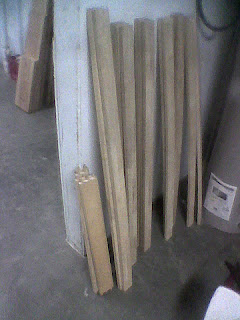So there it is, the corner bookshelf, nestled in the chaos of Hip thrift. I do believe it will be more comfortable once it has been claimed by a new owner. Keep in mind, it won't look like this anywhere else; the concept is a blank slate.
The open design makes it ideal for the creative display of toys, books, objects and art.
Meanwhile, I have been doing a bit of painting.
Dry brushwork on the side of a bookcase.
Here are new chairs to go with the tree table. Three are pictured from the set of four.
On a warm March morning, I went to a secret location with the artist Penish Wrinkle and we snagged some wonderful graffitied* tool cabinet doors.
*Graffitied is not a word yet! But I believe that one day it will be.
This is the backside of the door, which is being repurposed as the backing for a crooked, wobbly bookcase that I picked up at an estate sale.
And now it is solid as a rock and no longer crooked. I wire brushed the loose paint and heavily glazed the entire door, front and back, so it is a safe piece despite its delinquent origins.
The bookcase for vinyl sold yesterday and two different parties are now very interested in the tree table. It feels great to be productive! Thanks to everyone for your support.
___
] j [





























